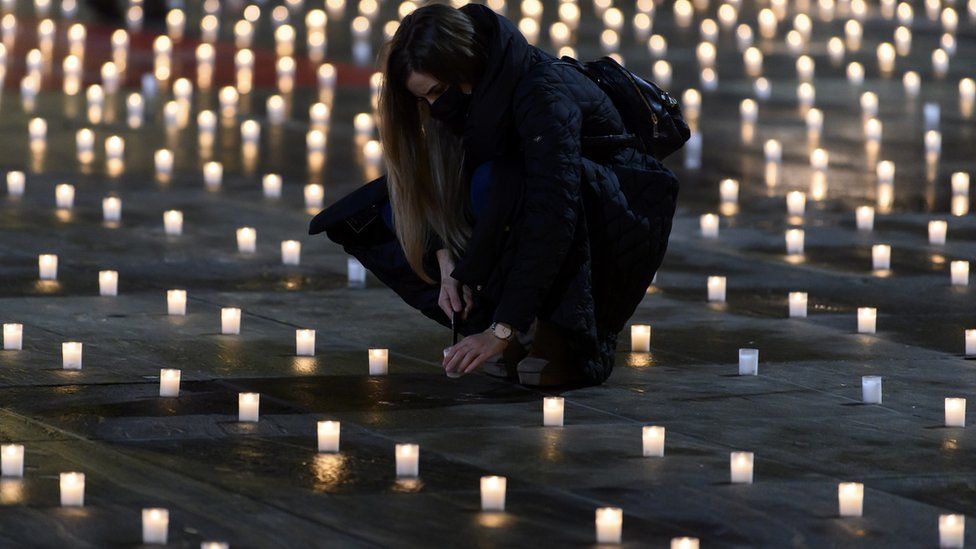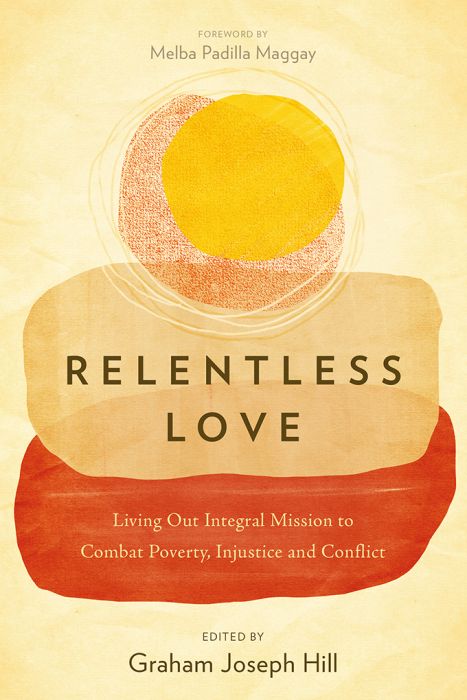Stories are powerful. They often convey truth far more effectively than a factual presentation or an academic paper.
There is a vast amount of academic research on the Troubles and Northern Ireland. I’ve even contributed to the pile. Many years ago the political scientist John Whyte wrote a book Interpreting Northern Ireland that sought to categorise and assess the tidal wave of research. He commented way back then that NI was probably one of the most heavily researched places on earth. And the volume of publications has only probably increased since his time. What difference all that research has made is another question!
Why mention this? Well, it’s surprising how rarely, in all that output, that stories of people caught up in the violence have been recorded and told and reflected upon. And even more rarely (if at all) a particular community has been invited to tell its stories.
That is what Considering Grace: Presbyterians and the Troubles sets out to do.
The Presbyterian Church in Ireland (PCI), and specifically its Council for Public Affairs (CPA), should be congratulated on being the catalyst for the book. Their idea was for a research project into the question ‘How did Presbyterians Respond to the Troubles?’ To ask the question (and act on it) speaks of a willingness for self-critical examination, an openness to learn from past mistakes and consider how to build a better future.
Gladys Ganiel, a sociologist of religion at Queen’s University Belfast, helped to find the funding and carried out the research with the help of Jamie Yohanis. Ganiel wrote the book. Again this was an encouraging decision. As a professional sociologist, Ganiel brings an objectivity to the process. And certainly the book does raise plenty of questions and issues for the PCI to consider.
Some 120 people were interviewed across a range of categories, including at least 50 women, geographically from all over NI and the border counties, and intentionally not restricted to clergy and leaders.
The groups were: ‘Ministers’, ‘Victims’ (the largest group of interviews), ‘Security Forces’, ‘Those Affected by Loyalist Paramilitarism’, ‘Emergency Responders and Health Care Workers’, ‘Quiet Peacemakers’, ‘Politicians’, ‘Those who Left Presbyterianism’, and ‘Critical Friends’.
As such, it is a valuable resource for at least 5 reasons:
1. (some) Victims’ Stories are heard
To an extent that is impossible to imagine if you didn’t live through it, the violence of the Troubles impacted every level of society. During 30 years of conflict, over 3,500 people were killed, 100,000 injured and countless others traumatised – all this in a small geographical area with a population of only 1.5 million.
One harrowing story follows another, especially in the chapters on ministers, victims, security forces and emergency responders.
About a year ago I spoke at a PCI conference in Omagh. A co-speaker was Rev Terry Laverty, whose story opens the book. He was 15 when his 18 yr old brother was shot dead by the IRA. His mother was already a widow, looking after seven children. That was 1972. Nearly 50 years on that pain has not diminished. His experience of God’s grace enabling him to forgive and live free of bitterness frames the book’s invitation to consider grace.
Terry Laverty and the authors are well aware that there is no one or ‘right’ way to grieve and that forgiveness cannot be forced – and may take decades if it happens at all. The strength of this collection of stories is its non-prescriptive nature. People tell their experiences. Some cannot say the line about forgiving others in the Lord’s Prayer while others can. And these are only a tiny selection of stories – many potential interviewees did not want to participate. Recounting the past was simply too painful or they could not see a benefit in bringing it all back up again.
2. Truth telling is an opportunity for grace
The motive for the book is to let the stories speak their own truth. Ganiel writes in the conclusion that such telling in itself is an invitation to grace. Listening well to others is an act of grace. It opens up possibilities of understanding, empathy and compassion. It fosters lament – a grieving along with those who have suffered so much.
The chapter on emergency responders sheds light on a particularly hidden aspect of the conflict. The relentless horrors that so many faced on a daily basis in hospital ERs, operating theatres and wards are talked of often for the first time by participants. Among all the pain, screaming, tears, and cursing of victims and their families, one line stayed with me from the health-care workers, themselves made up of people from both communities
‘All blood is red. There’s no orange or green blood’
3. To understand Protestant experience of sectarian conflict
At a different level, anyone seriously interested in Protestant experience of the Troubles should read this book. It does not claim to be the only story – there are others. But this is a story that needs to be told.
It should be essential reading for church leaders in training, for academics, for community leaders and for politicians. The PCI is continuing to reflect on the book and is producing resources for churches and groups based on it.
And it should also be a reminder for historians of Northern Ireland to take religious belief seriously as they research and write academic analyses of the Troubles. These are deeply human stories of anger, hurt, pain and suffering and loss – but also frequently of remarkable love, grace and resilience inspired by faith in Jesus Christ. Steve Bruce, a sociologist of religion and author of books on Paisley and Protestant paramilitaries is one voice who has long argued, in the face of much opposition, that religion needs to be front and centre of any analysis of NI.
4. As a Resource for critical self-reflection for the PCI
This was the original intent of the book and there are plenty of uncomfortable questions for the PCI to consider.
What is highlighted for me is the ambiguity of what is meant when we say ‘the Church’. Such a title conjures up images of a clearly defined hierarchy of leaders in control. But the PCI is more an uneasy mixture of a centalised bureaucracy bound by the ‘Code’ (rulebook) of the denomination combined with a decentralised structure and lack of hierarchical leadership. At a local level each minister and church pretty well do their own thing.
This structure has strengths. Geraldine Smyth (Critical Friends) notes how it allows the PCI to embrace a wide diversity of opinion. But is also can lead to what another interviewee called ‘lowest common denominator’ Christianity where the Church stays silent on controversial issues for fear of alienating some of its own members.
I wrote about this in my Evangelicalism and National Identity in Ulster 1921-1998 (Oxford University Press, 2003). It described the PCI’s slow and uneasy journey of self-critical reassessment regarding its relationship with political Unionism and Orangeism while trying not alienate many within its ranks committed to a ‘For God and Ulster’ theology who were the target for Paisley’s constant attacks on the ‘liberalism’ and ‘weakness’ of the PCI.
These internal tensions, combined with the denomination’s bureaucratic and democratic structures, meant that during the Troubles (and since) the Church tended to be politically tentative, lacking both the will and a common vision required for prophetic action.
You see this in the interviewees criticisms about ‘the Church’. They are often contradictory, but have in common a frustration about inaction on the ground and merely abstract statements of principle.
- Some want more political involvement, others do not think the Church should be involved in politics;
- some want the Church to make peace-making a central priority, others want more support for victims and justice for those who took lives with apparent impunity;
- some want to make the Church more truly Reformed, others are closer to a ‘mere Christianity’ and have little affinity for, or interest in, Reformed theology;
- some are socially, politically and theologically conservative, others are passionate about the radical social implications of the gospel;
- some think the Church did as much as it possibly could in an awful situation, others think the Church let the Lord down by its prioritisation of internal unity at the expense of obedience to Jesus’ teaching on forgiveness and loving enemies.
It’s not easy to see how such internal tensions can be resolved. I guess there are at least two dead ends. One is to pretend they are not there. The other is for one group or other to try to ‘grab power’ and enforce their own vision while marginalising others with whom they disagree. Such methods are likely to either split the church or just increase the flow of those heading for the exits. There is no short cut to transparency, dialogue and listening to each other.
5. The need for hard theological reflection
As a theologian I would say this wouldn’t I? All all of life is theological in the sense that every disciple of Jesus is faced daily with the question Dietrich Bonhoeffer asked, what is the meaning of ‘Jesus Christ for today?’
In the context of sectarian violence all sorts of theological questions emerge from a reading of this book. Questions like:
What is our theology of God and suffering?
What does it mean to love your enemies in a context of political violence?
What is our theology of forgiveness? (this comes up a lot in the interviews)
What is our theology of justice?
What is our theology of church and state?
What is our theology of faith and national identity? (this is the question my book primarily tackled)
What is our theology of peacemaking? Of violence / non-violence? (Joe Campbell, a friend who is interviewed in the ‘Quiet Peacemakers’ chapter, makes a telling observation that the PCI does not have a coherent peace theology. But things are changing. The Church’s 1990 Coleraine Declaration was a challenge to traditional views of violence and just-war. Again, how much it has stayed a statement of principle is open to question).
This of course is not to say that Presbyterianism, with its rich theological legacy, has not thought about these questions. But it is to say that from reading Considering Grace there seems to be a major disconnect between theory and practice on the ground. Despite much loving pastoral care, you get the sense that many interviewees are left wrestling with such questions on their own.
It is telling that it was a parachurch group like Evangelical Contribution on Northern Ireland (ECONI) that did most during the troubles to think theologically and biblically about these sort of theological issues. Many found their work a breath of fresh air.
So for me this book reinforces that theology is the lifeblood of the Christian faith. A critical task for every generation of Christian leaders is to help believers under their care know the Scriptures and to be resourced to think with a Christian mind about all of life.






